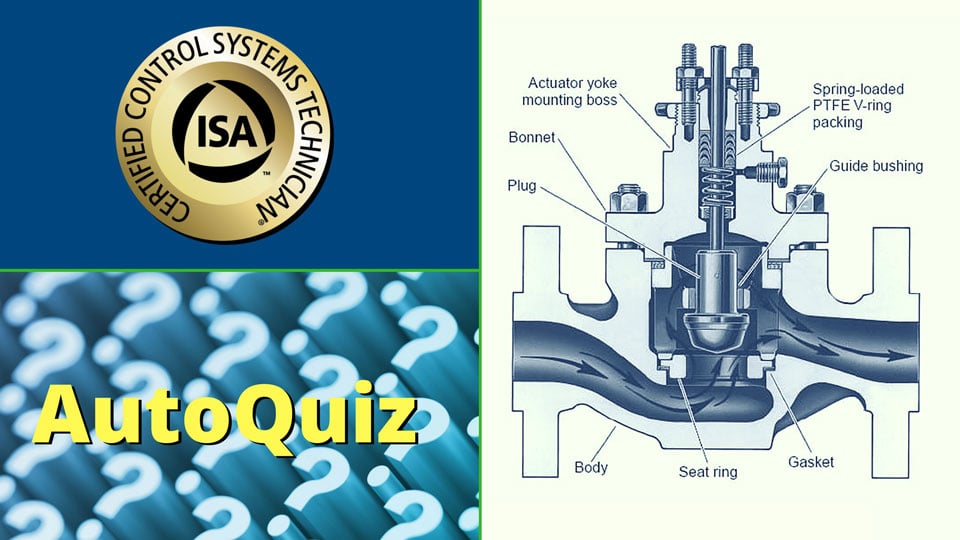AutoQuiz is edited by Joel Don, ISA's community manager.
Today's automation industry quiz question comes from the ISA Certified Control Systems Technician (CCST) program. Certified Control System Technicians calibrate, document, troubleshoot, and repair/replace instrumentation for systems that measure and control level, temperature, pressure, flow, and other process variables. Click this link for information about the CCST program. This question comes from the Level I study guide, Domain 3, Troubleshooting. Level I represents a professional who has a five-year total of education, training, and/or experience.

If a control valve will pass 25% of its full capacity when it is 25% open, 50% of its capacity when 50% open, and 75% when 75% open, the inherent characteristic is:
a) quick opening
b) equal percentage
c) throttling
d) linear
e) none of the above
The "inherent flow characteristic" is the relationship between valve capacity and valve travel, and we usually express it graphically. It comes by testing a valve with water as the fluid using a constant pressure drop across the valve. The most common are linear, equal percentage, modified parabolic, and quick opening.
Throttling is not a specific flow characteristic. Rather it is a broad class of valves that open incrementally and that would display the other three characteristics listed here depending on the kind of valve.
Valves that are not throttling valves would include those normally open and where maximum flow is constantly the requirement and where the valve only closes for maintenance. Cooling systems use these valves.
Here are definitions of the characteristics we see in this question.
Quick opening: An inherent flow characteristic in which a maximum flow coefficient happens with minimal closure member travel.
Equal percentage: An inherent flow characteristic that, for equal increments of rated travel, will ideally give equal percentage changes of the flow coefficient.
Linear: An inherent flow characteristic that is a straight line on a rectangular plot of flow coefficient versus rated travel. Therefore, equal increments of travel provide equal increments of flow coefficient.
The correct answer is D, linear.




